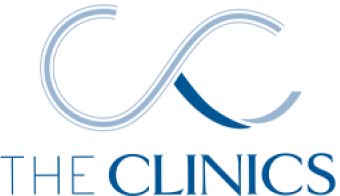
Chin Augmentation
Chin augmentation, also known as genioplasty or mentoplasty, is a type of chin enhancement surgery designed to improve the appearance of the lower face.

What is Chin Augmentation?
Chin augmentation, also known as genioplasty or mentoplasty, is a type of chin enhancement surgery designed to improve the appearance of the lower face, primarily the chin and jawline. The objective of chin augmentation is to correct the symmetry and overall aesthetic of facial features by increasing the size or projection of the chin.
Why Have Chin Augmentation?
An individual may choose a cosmetic chin procedure if they are dissatisfied with the size, shape or contour of their chin. Chin augmentation can be done independently or alongside other facial plastic surgeries, such as rhinoplasty (nose surgery), jawline contouring or facelift to achieve a more comprehensive and harmonious enhancement.
FAQ’s
How is chin augmentation performed?
Chin augmentation can be performed using different techniques. One common technique involves the use of chin implants (your surgeon will review all the chin implant types). The implants are inserted through incisions made inside the mouth or under the chin. Another method is surgically repositioning the chin bone through osteotomy (bone surgery).
What are chin implants made of?
Chin implants can be made of hard silicone, porous polyethylene, or other biocompatible materials that are tolerated well by the body.
What are the risks associated with chin augmentation?
As with any surgical procedure, there are potential chin implant complications. These can include infection, bruising, nerve damage, implant displacement, or dissatisfaction with the results. Choosing a highly skilled and experienced surgeon can help minimize these risks.
We invite you to book a consultation with one of our expert plastic surgeons to find out if chin augmentation is right for you.

Chin Augmentation Quick Facts:
| Cost of Chin Augmentation | TBD |
|---|---|
| Duration of Surgery | 1-2 hours |
| Hospital Stay Required? | No |
| Stitches Removed | N?A |
| Days of Social Downtime | 1-2 weeks |

After Surgery:
Downtime and recovery: Recovery after chin surgery can vary from person to person and depends on the specific technique used and overall health of the person. Below are some general guidelines for what you can expect:
1 Day Post-Op: Take medication as prescribed by your surgeon. Swelling and bruising around the chin and jawline are common. Applying cold compresses can help reduce swelling during the first 48 hours. Never apply ice directly to the skin.
1 Week Post-Op: Make sure to get plenty of rest during the first week. Avoid strenuous physical activity and keep your head elevated when sleeping to minimize swelling. Eat soft foods such as soup and yogurt for the first week to avoid putting too much pressure on the chin and jaw. Your surgeon will advise you when you can begin eating solid foods again.
2-3 Weeks Post-Op: Attend all scheduled follow-up appointments with your surgeon to monitor your progress and address any concerns. You will be able to return to your normal activities gradually over the next couple weeks. Avoid activities that involve excessive jaw movement such as eating crunchy foods and chewing gum.
Long-term recovery:
Full recovery may take several weeks to a few months. Let your surgeon know right away if you experience excessive pain, swelling, or any other complications that seem out of the ordinary.
What to Expect Before Surgery:
Follow pre-operative instructions: You will be provided with detailed pre-operative instructions by your surgeon. These may include avoiding medications that promote bleeding, making sure you have all the medications you’ll need post-operatively and when to stop eating and drinking the night before.
Plan for your recovery: You should prepare for some swelling, bruising and some pain after surgery and once the anesthetic wears off. You will be provided with thorough instructions on post-care and how to manage any discomfort to promote a smooth recovery.
How to Prepare for Chin Augmentation

Do your research
A consultation and medical evaluation with a qualified Plastic Surgeon is the first step in preparing for your chin augmentation. During your initial meeting you can learn more about the procedure, chin augmentation risks and complications, and discuss your treatment goals.

Discuss Options
There are different types of chin augmentation. These include the placement of a silicone implant, or surgery to reposition the bone to achieve the desired projection. All your options will be discussed in detail to help you choose the procedure that best aligns with your aesthetic goals.

Quit smoking
If you’re a smoker it’s best to quit smoking at least six weeks in advance. Nicotine and other chemicals in tobacco can constrict blood vessels and impair your body’s ability to heal adequately post surgery.
ELEGIBILITY The Ideal Candidate for Chin Reshaping
The ideal candidate for chin surgery is someone with a weak or receding chin. Particularly, if the chin appears disproportionate in relation to other facial features. A good example is when the chin, nose and forehead are not aligned in a pleasing and balanced manner. Below are some other factors to consider:
Non-surgical options are not a consideration: Individuals who have either tried non-surgical treatments such as dermal fillers, or want a more permanent solution, are excellent candidates for surgical chin contouring.
Good overall health: A person should be in excellent health and a non-smoker. This includes having no serious physical or emotional conditions that could affect the outcome or be a contraindication to surgery and general anesthesia.
Facial bones have fully developed: While there is no definitive age restriction, the surgeon may recommend that an individual postpone the procedure until their facial bones have fully matured. Typically, this occurs at around 18 years of age for women and slightly later for men.
Have realistic expectations: Patients should have realistic expectations about what chin augmentation surgery can and cannot achieve. The initial consultation with a plastic surgeon can help set realistic goals and expectations.





